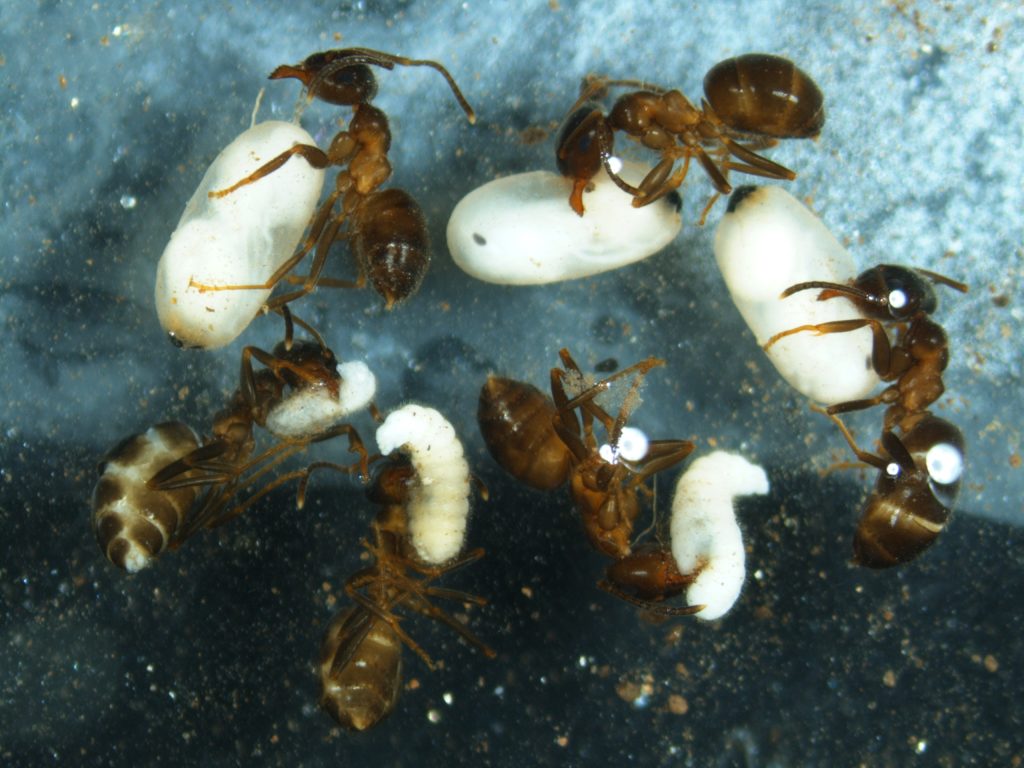From “extracting” to “fixing” soil organisms

If somebody asked me what is the hardest part about my job, my answer would definitely be the killing part. I guess every biology student goes through the moral justification using animals for studying or for doing their research. Since I never studied biology and faced those moral dilemmas, those questions came up a bit later for me. Here I am, wondering if it is ok to kill all those organisms ranging from worms with no feet to insects and other organisms such as myriapods with up to 100 feet. All of this death just for our research, just to know who lives in the soil. It is so weird that studying biology is so often so much more about interacting with dead organisms than with actual living ones. But I guess to study life, death gives some valueable insights. But back to my justifications. If we kill the organisms from a 25x25x30cm block of soil, is this really that bad? Where do the morals get lost? I collected here some raw thoughts and wanted to take you into my moral meanders.
- Scientists do it for the protection of soil organisms so that the gained knowledge and research in the long term allows the determination of protection zones and activities to keep ecosystems intact. Knowing protective practices can prevent harm to the killed organisms’ family and friends in the long run.
- We extrapolate only from a very small sample plot that is then extrapolated statistically.
- Presently, there are few other ways to identify them. Unfortunately, if we want to know who is living in the soil, we need to kill those organisms. Most of the organisms are so small and difficult to differentiate from each other that presently, there are no better methods to identify soil organisms than by “extracting” and “fixing” them in alcohol which kind of mummifies their bodies. In the soil, the problem is that we are dealing with extremely small organisms with very vulnerable skins (membranes). If the organisms are no longer in their familiar surroundings like dark, moist, relatively temperate soil but if they are exposed to too much UV-light and air, they die and degrade fast. In that case, it gets very hard to identify them. The extraction is done with the help of heat. The way vampire avoid the light to not dry out, the soil organisms avoid the heat. In most soils it is quite cold and moist, so if your home is suddently heating up and drying out, you move away from this danger. Only problem- it is a trap. Gravity lets you fall deep into a little glass full of alcohol (not the one liked to be consumed, its a bit too strong with 70%), its your end – you were successfully “extracted” and “fixed”. This was the scneario for you being a little mite, springtail or little larvae. For small white worms like nematodes and podworms (enchytraeids), the extraction happens in water: They move away from the heat to the moist soil where they sink down the glass. The fixing alcohol is here only added in a next step (more on how to encounter and “extract” the organisms in this article here).When it comes to morphological identification,I hope that AI will catch up and assist so that picture identification of alive organisms will be feasible in the field. Google Lens is already pretty good identifying the pictures of the killed organisms. The only problem would be that pictures need to be taken in the field and then those pictures are all there is, there is no way to go back to check another detail that is maybe not visible on the picture (e.g. capturing the number of eyes of a spider, or the number of claws). So, if there are any good programmers out there, please use your power to put it on the protection of our belowground friends by developing portable lenses to the field.
- An alternative to those morphological “hand-sorting”, very time consuming methods that are very dependent on few experts is using molecular methods to assess environmental DNA of soils, e.g. by metabarcoding or metagenomic methods. For example, metabarcoding assesses the diversity of a sample by considering all traces of a similar gene (e.g. there is a gene for bacteria, one for fungi and one for other soil multicellular organisms). Unfortunately, there are still some shortcomings connected using environmental DNA especially for assessing larger soil fauna. (In the study I conducted for my PhD thesis, results for macrofauna were really scarce, because too little volume of soil was sequenced).
But in the end, whom am I writing this for? I guess for myself but morality in the end is the struggle within ourselves, using our free will to make the right decisions. While some people might argue why caring about a few worms and bugs, I do not want to stop wondering about this weird vocabulary and do not want to get too familiarised with the killing. It makes me sad to kill all those ants, carrying their larvae in an attempt to protect them from the nearing danger.

All I can do is to reduce it to a bare minimum that is needed to identify the life in the small little plot. And as soon as there are new, better ways to identify soil critters, move on those ones!



